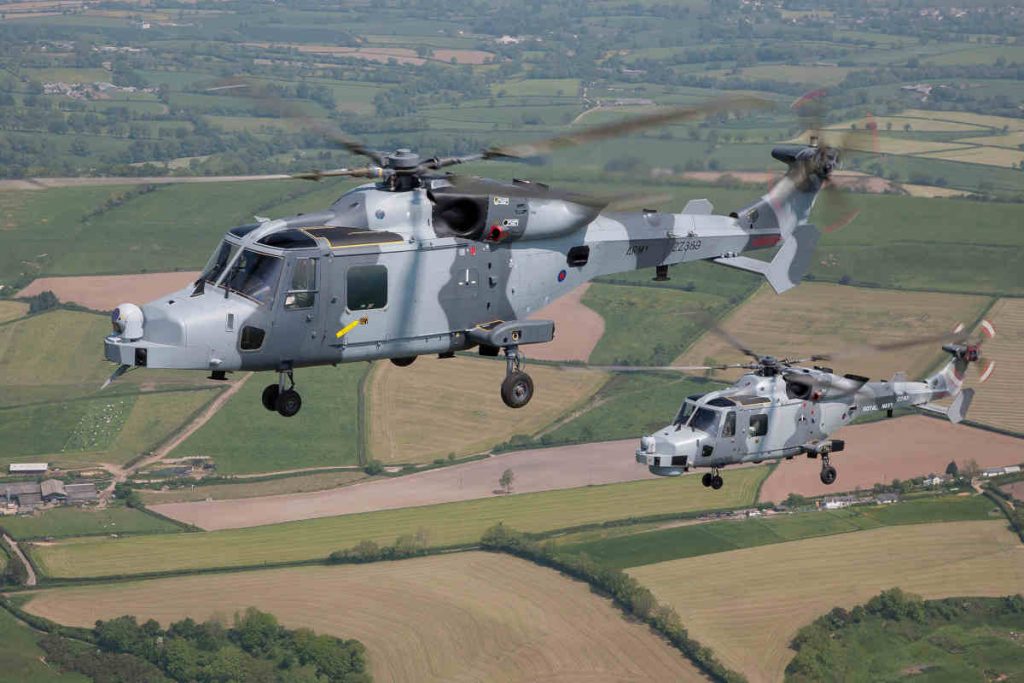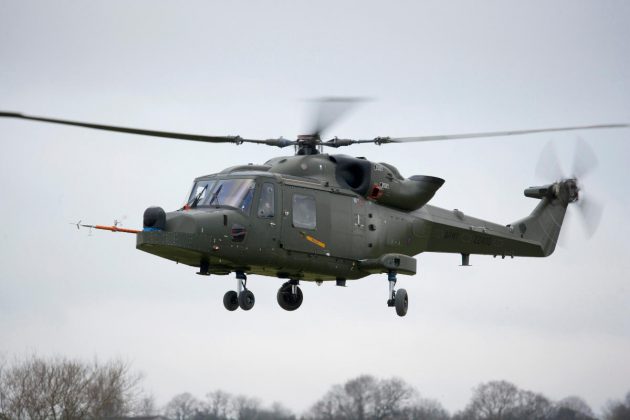
Features
Military
Ten years of AW159 Wildcat
November 14, 2019 By Helicopters Staff
 More than 70 AW159 units have been delivered to customers including the British Army, Royal Navy, Republic of Korea Navy and the Philippine Navy. (Photo: Leonardo)
More than 70 AW159 units have been delivered to customers including the British Army, Royal Navy, Republic of Korea Navy and the Philippine Navy. (Photo: Leonardo) Leonardo is celebrating 10 years of the AW159 Wildcat which lifted off for the first time on November 12, 2009, from Yeovil in South Somerset, UK. The helicopter is in current operation with the UK MoD and other international users.
To date more than 70 AW159s in a variety of roles have been delivered to battlefield and maritime military operators around the world. More than 50,000 flight hours have been logged by the helicopter.
In addition to its use by the British Army and Royal Navy, the AW159 was chosen by the Republic of Korea Navy, as a replacement for its Lynx helicopters. The Philippine Navy is a new maritime operator of the helicopter.

The maiden flight of the AW159 Wildcat took place on November 12, 2009, from Yeovil. (Photo: Leonardo)
Leonardo explains the twin-engine, multi-role helicopter is able to conduct missions ranging from constabulary to warfighting where it has the capability to autonomously detect, identify and attack targets on land and at sea. The company also points to the platform’s Leonardo Seaspray multi-mode electronically scanning (E-scan) radar and integrated Defensive Aids Suite.
Leonardo continues to explain the aircraft has a fully integrated suite of mission systems operated through a tactical processor that facilitates rapid tactical assessment in any theatre, day or night. The military derived HMI is designed to reduce aircrew workload and increase cockpit capacity. It is designed from concept to operate safely from the smallest ships’ decks in the harshest environment of poor weather and high sea states.
The AW159’s design, explains Leonardo, was originally conceived in response to the UK MoD’s requirement to replace its legacy Lynx aircraft. In 2002 the Future Lynx project began and it scoped out Surface Combatant Maritime Rotorcraft and Battlefield Light Utility Helicopter requirements.
Four years later, the MoD finalized its contract award and in October 2007 the manufacture of the AW159 began. After the maiden flight of the AW159 Lynx Wildcat in 2009, Leonardo explains the aircraft conducted its first deck landings on RFA Argus and then HMS Iron Duke in 2011.
In May 2012, the first production AW159 Wildcat was received by the British Army. Initial Operating Capability was declared by the Army on schedule in August 2014 and the Royal Navy following as planned in January 2015, four years after the maiden flight. Leonardo notes success continued with all aircraft delivered to MoD meeting Full Operation Capability by the end of 2015.